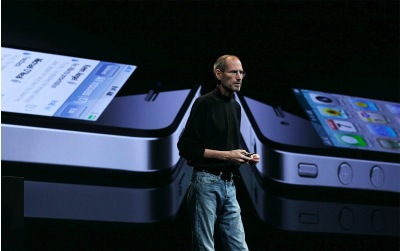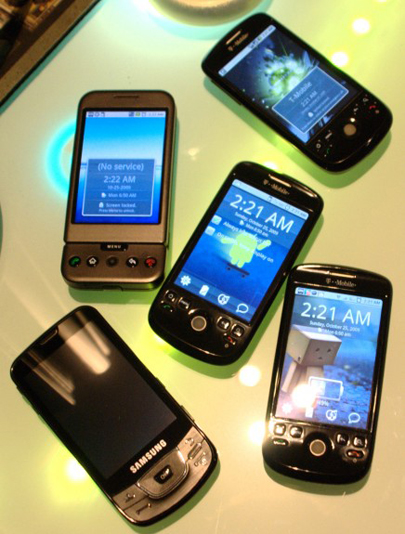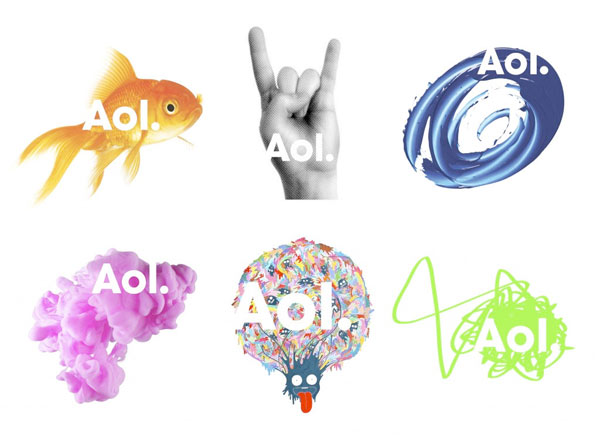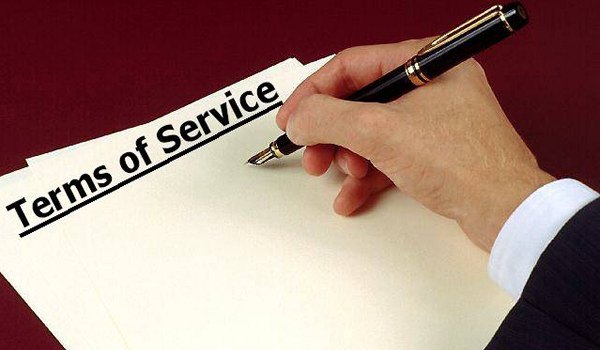Written by Phil Plait
As we ramp up to the mid-term elections in November 2010 — sure to be just a warmup to the insanity that will be the Presidential election in 2012 — you can bet your bottom shekel that we’ll be hearing from a lot of “family values” politicians decrying our lack of morality. That’s de rigeur for any election, but every cycle it seems to get worse.
 A lot of these claim that the United States is either a Christian nation — a ridiculous and easily-disprovable notion — or that it was founded on Judeo-Christian principles (the “Judeo” part is a giveaway that these politicians are Leviticans: they seem to keep their noses buried more in the fiery wrath of the Old Testament than in the actually gentle, politically-correct teachings of Jesus… more on this later, promise). Specifically, they claim quite often that our laws are based on the Ten Commandments.
A lot of these claim that the United States is either a Christian nation — a ridiculous and easily-disprovable notion — or that it was founded on Judeo-Christian principles (the “Judeo” part is a giveaway that these politicians are Leviticans: they seem to keep their noses buried more in the fiery wrath of the Old Testament than in the actually gentle, politically-correct teachings of Jesus… more on this later, promise). Specifically, they claim quite often that our laws are based on the Ten Commandments.
I was thinking about this recently. People seem to accept that our laws are based on the morals of the Old Testament laid out in the Commandments, but as a proper skeptic, I decided to take a look myself. Why not go over the Commandments, said I to myself, and compare them to our actual laws, as well as the Constitution, the legal document framed by the Founding Fathers, and upon which our laws are actually based?
So I did*.
For those of you not familiar with the Bible — which includes many politicians most willing to thump it, it seems — what follows is the relevant passage from Exodus 20 in the King James Version†. I found it online at the University of Michigan’s Digital Library, which matches other online versions I found. Note: apparently, God said some other stuff interspersed among the Commandments, a sort of legal commentary to stress the aspects He felt important. I have highlighted the actual Commandments below.
Let’s take a look:
[1] And God spake all these words, saying,
[2] I am the LORD thy God, which have brought thee out of the land of Egypt, out of the house of bondage.
[3] Thou shalt have no other gods before me.
[4] Thou shalt not make unto thee any graven image, or any likeness of any thing that is in heaven above, or that is in the earth beneath, or that is in the water under the earth:
[5] Thou shalt not bow down thyself to them, nor serve them: for I the LORD thy God am a jealous God, visiting the iniquity of the fathers upon the children unto the third and fourth generation of them that hate me;
[6] And shewing mercy unto thousands of them that love me, and keep my commandments.
[7] Thou shalt not take the name of the LORD thy God in vain; for the LORD will not hold him guiltless that taketh his name in vain.
[8] Remember the sabbath day, to keep it holy.
[9] Six days shalt thou labour, and do all thy work:
[10] But the seventh day is the sabbath of the LORD thy God: in it thou shalt not do any work, thou, nor thy son, nor thy daughter, thy manservant, nor thy maidservant, nor thy cattle, nor thy stranger that is within thy gates:
[11] For in six days the LORD made heaven and earth, the sea, and all that in them is, and rested the seventh day: wherefore the LORD blessed the sabbath day, and hallowed it.
[12] Honour thy father and thy mother: that thy days may be long upon the land which the LORD thy God giveth thee.
[13] Thou shalt not kill.
[14] Thou shalt not commit adultery.
[15] Thou shalt not steal.
[16] Thou shalt not bear false witness against thy neighbour.
[17] Thou shalt not covet thy neighbour’s house, thou shalt not covet thy neighbour’s wife, nor his manservant, nor his maidservant, nor his ox, nor his ass, nor any thing that is thy neighbour’s.
So let’s take these one at a time, and see how many points of U.S. law that overlap the Ten Commandments shalt rack up.
1) I am the LORD thy God… Thou shalt have no other gods before me.
OK, that’s clear enough. Obviously, God is saying He’s the only one, and all other religions that have other gods, or other versions of The One God, are wrong.
So let’s take a look at the Constitution, specifically the First Amendment:
Congress shall make no law respecting an establishment of religion, or prohibiting the free exercise thereof;
Right away, we have a problem. That’s the very first thing laid out in the Bill of Rights, and I mean the very first sentence. “Congress shall make no law respecting an establishment of religion.”
What this says to me, and is pretty clear about it, is that we cannot make laws saying this god or that god is The God. Not only that, if you want to worship a god, any god, you have the legal right to do so.
Clearly, this very First Right of all Americans is in direct contradiction to the very first Commandment sent down by God. So people saying our laws are based on the Ten Commandments must never have even gotten to the first one of the ten. I guess they got to Exodus 19 and stopped.
Points: 0
Running total: 0
2) Thou shalt not make unto thee any graven image, or any likeness of any thing that is in heaven above, or that is in the earth beneath, or that is in the water under the earth.
Obviously, we have no laws governing this. As I understand it, this is a point of contention between many different sub-sections of Christianity, which is understandable. If you have a statue of, say Jesus, and you worship it, does it break this Commandment? Maybe you can claim it only represents God. I suppose transubstantiation is also something to consider here. But I wonder; sometimes people leave little offerings to statues and such, like when a statue of the Virgin Mary is seen to bleed, or when a religious icon appears in an overpass or a window. Is that a violation of this Commandment?
These sorts of arguments are interesting to me, but I’m not a religious scholar, so I’ll leave it for others to decide. The point is, no laws are on the books or in the Constitution to prevent that, and again the First Amendment says it’s OK to worship whomever you want.
So…
Points: 0
Running total: 0
3) Thou shalt not take the name of the LORD thy God in vain
Ah, another easy one. The very second phrase in the First Amendment states:
[Congress shall make no law] abridging the freedom of speech
There’s no codicil that says, “…except for taking the Lord’s name in vain”, so I have to conclude the Constitution not only is not based on this Commandment, but directly contradicts it as well.
Points: 0
Running total: 0
4) Remember the sabbath day
Well, we do have Blue Laws in the US, restricting things like business practices (notably liquor sales) on Sunday. Of course, the Jews say the sabbath is from Friday night to Saturday night, and don’t see Sunday as being the sabbath at all, so interpreting this Commandment is a bit up in the air. But even ignoring that, most of these Blue Laws have — correctly — been repealed. Not only that, but I suspect that a lot of these politicians making claims about the Ten Commandments themselves work on Sundays (or even Saturdays).
Since we do in fact have laws based on this Commandment — even if they are unconstitutional — I’ll give this one half credit.
Points: 0.5
Running total: 0.5
5) Honour thy father and thy mother
This is good advice, certainly, and at the very least worth keeping in mind and even attempting in daily life. But is this the basis for any legal precedent? Children disrespect their parents all the time — I might even accept that as a definition of childhood. Of course, before they’re 18 we can’t toss a kid in jail for saying their dad is a poopyhead, but after they come into the majority… but then adult offspring still do all sorts of disrespectful things to their parents. Again, think as I might on this, I can’t come up with any laws (or any Constitutional statements) specifically saying you can’t be disrespectful. Sure, you can’t slander your parents, or libel them, or beat them up, or any number of other awful things. But you can’t do that to anyone, and those are illegal for other reasons, and don’t count.
Points: 0
Running total: 0.5
Intermission
So here we are, halfway through the Ten Commandments, and there is not yet one single thing they say that actually has legal precedent. Mind you, if I were God, I’d put the most important rules first, so I think even at this midway point we can safely say our laws are not based on the Ten Commandments. But it’s worth going through them all, and besides, I promised. I don’t want to be accused of bearing false witness.
6) Thou shalt not kill.
Now we’re getting somewhere. This action forbidden by God actually is illegal!
Now, I can argue that this particular action was objectionable long before the Ten Commandments were etched in stone. Heck, even some other primates apparently can grieve over the loss of other primates. So I don’t think we can actually state that our laws are based on this Commandment; it’s more like they have a common ancestor. Note too that the code of Ur-Nammu, which predates Moses by centuries, expressly forbad murder.
Also, people kill all the time, and it’s not necessarily illegal. Soldiers, for example, or killing in self defense. Some people say that the Commandment actually translates to “murder”, which would then exclude my two examples. Fair enough. But either way, the Commandments can’t really claim first rights to this one.
However, I can’t rule out that our law is based on this Commandment; even if other civilizations had their own rules, ours may have a different pedigree. From what I’ve read, much of the rules laid out in the Constitution were taken from British law, and that itself may have roots traceable back to the Commandments.
Given all this, I can be generous, and give this one a full point.
Points: 1.0
Running total: 1.5
7) Thou shalt not commit adultery.
Well, we do have some laws dealing with this as well — though they are seldom enforced, and vary wildly from state to state. To be honest, I think these laws are silly, and I’m glad they’re not taken too seriously. If someone chooses to have adulterous relations outside their marriage, that’s up to them. If they have a contract — legal or emotional or personal — to someone else, and betray them in this way, then yeah, that’s pretty awful, and immoral. We’ve evolved to be mostly monogamous creatures, and we feel pretty bad when our mate goes off with someone else. But we do have the capability to exceed our evolutionary limitations. And what if both people in the relationship mutually agree to bring in a third party? Isn’t that up to them, and not some Senator who peeps into their bedroom window to decide?
Something like this, I suspect, should be taken on a case-by-case basis, and not have blanket laws thrown over everything. In this sense (and more things listed below), my feelings would fall under the purview of libertarianism. Mind you, there are some things that may be bad behavior but aren’t necessarily illegal. If you disagree with this, think about some bad behavior you personally might have, and ask yourself if they should be illegal. Bear in mind marijuana is illegal, but tobacco and alcohol aren’t. Hmmm.
Since few of these laws even exist, and those are on the wane — and not enforced — even half credit would be a stretch.
Points: 0
Running total: 1.5
8) Thou shalt not steal.
Well, sure. No quarrel here. And since a lot of the arguments behind this follow those of #6 above, I’ll have to give this a full point.
Still, something here bugs me. After all, this one’s a bit specific, don’t you think? I mean, if God went out of His way to start mentioning specific acts to be bad, why this one? Why not other ones that are generally considered to be more important? Sure, stealing is bad, but I’d rather someone steals a loaf of bread than rapes someone, for example. I would put rape much higher on the list even than adultery, too. What kind of legal or moral code would leave that act off its list of “Thou shalt nots”? I’ll note that the above-mentioned Code of Ur-Nammu made rape a capital crime.
Since we do have laws about this, and given #6, I’ll grant this a full point.
Points: 1.0
Running total: 2.5
9) Thou shalt not bear false witness against thy neighbour.
Of all the Commandments, this is the one I like the best. Why? For one thing, as a skeptic and scientist, I think it’s incredibly important to be honest.
But another reason is schadenfreude. So many people who interpret the Bible literally seem to ignore this Commandment, like, for example, here, and here, and here, and here, and here, and here. Say.
However, the strict interpretation of this Commandment is not simply lying. Bearing false witness is a phrase that implies you are lying in some sort of official capacity; for example, in front of a local judge or magistrate. In that case, it’s perjury, and illegal. Again, these rules are more ancient than the Commandments, but with #6 and #8 above, I’ll have to give this a full point.
Points: 1.0
Running total: 3.5
10) Thou shalt not covet thy neighbour’s house, thou shalt not covet thy neighbour’s wife, nor his manservant, nor his maidservant, nor his ox, nor his ass, nor any thing that is thy neighbour’s.
I’m not a big fan of coveting. It’s more than simple jealousy, it’s the actual inordinate desire to possess something owned by or associated with someone else. It can be an ugly emotion, to be sure, but making it illegal would, I think, be overstepping the bounds of the legal system.
I’m also not so big on outlawing an emotion. Coveting is uncool, but there is a whole laundry list of negative emotions, many of which are ugly indeed. We don’t have laws against those, but it’s odd to me that the one emotion listed in the Commandments is coveting. Either way, this certainly argues against the idea that we’re basing our laws on the Commandments.
Flipping this around, there’s also a huge list of immoral actions that are illegal, but not mentioned in the Ten Commandments. Torture, for one. Waging false war would be up there pretty high on my list. Nepotism is a good one, too. I bet you can think of others.
Anyway, since we don’t have actual laws against coveting this one gets no credit.
Points: 0
Running total: 3.5
Conclusion
GRAND TOTAL: 3.5
Hmph. So at the very best — and I think I was generous — not even half the Commandments translate into law, and those that do have a suspicious pedigree. Moreover, the first four Commandments, and the ones that most pertain to religion and Judeo-Christianity specifically, are expressly forbidden by our Constitution (and the fifth is arguably unconstitutional as well). If the Founding Fathers really wanted our country’s system of laws to be based on the Commandments, then this is not an auspicious way to do it.
One might even think they were trying on purpose, very hard, to prevent such a thing.
Now, some people say that it’s not really our laws, but our morality that’s based on the Ten Commandments. I think that’s a silly claim as well, for many of the same reasons outlined above. Remember too that many civilizations had codes of ethics and legal systems that had similar ideas long before Moses climbed Mt. Sinai.
Moreover, reading through the teachings of Jesus, I see a lot of things like (paraphrasing a bit) “Be nice to each other”, “Forgive one another”, “Look at your own failings before sniping at someone else”, and others. Not only are these not in the Ten Commandments, most of them aren’t even hinted at. Sure, not coveting and stealing your neighbor’s possessions is a good place to start for morality, but I think those could both be encompassed by saying “Your neighbor’s a person too, and you should respect that.”
I might even claim that rule to be golden. Say.
So the Ten Commandments are clearly neither the moral nor legal basis of the United States of America. At best, you can say that 2 (rounding up) overlap our laws, but they are a hardly a basis for laws. And they fall far, far short of being a basis of morality. I would think a lot of the things (but not all of them!) in Jesus’s Sermon on the Mount would be in a better position for claims of our moral basis, but I don’t see anyone saying a transcript of that speech should be hung in a courtroom.
And it would be illegal in many cases to do so anyway.
Of course, nearly all politicians making claims about moral issues based on the Bible are themselves going against a whole lot of the things Jesus was pretty specific about. Go ahead and read the Sermon on the Mount, and ask yourself if the politicians so fond of bringing up that old-time religion are really following in the footsteps of the One they claim to follow.
* I’m not a lawyer, so any actions you take based on my interpretations hereunder — committing adultery, coveting thy neighbor’s ass, or any combination thereof — is your own fault.
† I will ignore the list that is made in Deuteronomy 5, which is slightly divergent from the one in Exodus 20, or the Ritual Decalogue in Exodus 34 which is way, way different from what most people consider to be THE Ten Commandments. I’d include them as well, but that would be very inerrant of me.

 A lot of these claim that the United States is either a Christian nation —
A lot of these claim that the United States is either a Christian nation —  Justin Sullivan/Getty Images At Apple’s developer conference in San Francisco, Steve Jobs
Justin Sullivan/Getty Images At Apple’s developer conference in San Francisco, Steve Jobs 


















































































